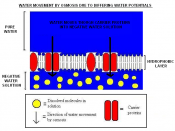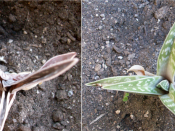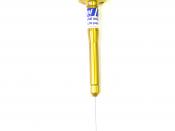Transpiration
AP Lab
Overview
In this lab you will:
1. apply what you leaned about water potential from Lab 1 (Diffusion and Osmosis) to the movement of water within the plant,
2. measure transpiration under different lab conditions, and
3. study the organization of the plant stem and leaf as it relates to these processes by observing sections of tissue.
Objectives
Before doing this lab you should understand:
how water moves from roots to leaves in terms of the physical/chemical properties of water and forces provided by differences in water potential;
the role of transpiration in the transport of water within a plant; and
the structures used by plants to transport water and regulate water movement.
After doing this lab you should be able to:
test the effects of environmental variables on rates of transpiration using a controlled experiment, and
make thin sections of stem, identify xylem and phloem cells, and relate the function of these vascular tissues to the structures of their cells.
Materials
0.1-mL pipette
16-inch clear plastic tubing
Tray of water
Plant
Ring stand
Floodlight
Fan
Spray bottle for mist
Procedure
EXERCISE 9A: Transpiration
Each lab group will expose one plant to one treatment.
1. Place the tip of a 0.1-mL pipette into a 16-inch piece of clear plastic tubing.
2. Submerge the tubing and pipette in a shallow tray of water. Draw water through the tubing until all bubbles are eliminated.
3. Carefully cut the plant stem under water. This step is very important, because no air bubbles must be introduced into the xylem.
4. While your plant and tubing are submerged, insert the freshly cut stem into the open end of the tubing.
5. Bend the tubing upward into a "U" and use the clamp on a ring stand to hold both the pipette...


